Types and varieties of sansevieria
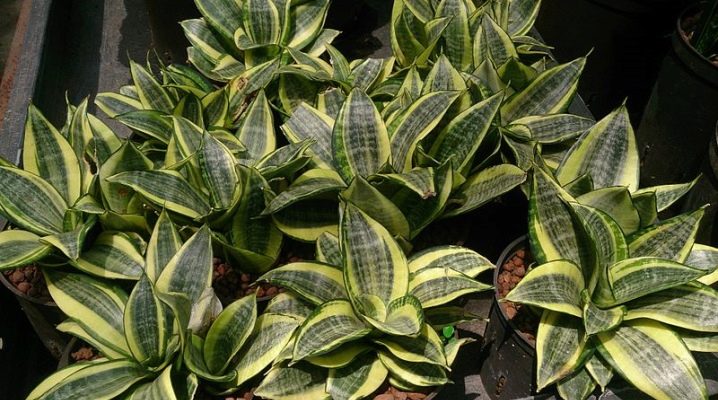
Sansevieria is one of the most popular indoor plants. This flower is quite unpretentious to care for and is able to adapt to any conditions. There are more than 60 types of sansevieria, which differ in color, shape and size of leaves, of which only 10 are grown at home as an ornamental plant.
Varieties and their characteristics
Sansevieria belongs to the Asparagus family. Due to its color, this species has received several names:
- "Mother-in-law's language";
- "Pike tail";
- "Snake skin";
- "Wolf's tail";
- "Leopard lily".

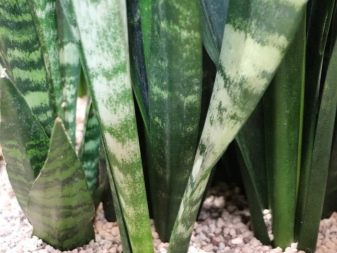
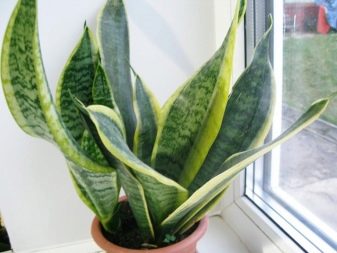

This perennial evergreen plant was chosen by flower growers for its unpretentiousness and ease of growing. In nature, it grows in tropical regions of Asia and Africa.
Conventionally, the plant is divided into two types: with long flat leaves and short large ones, which form a beautiful rosette. Sansevieria is of several types:
- three-lane;
- cylindrical;
- hyacinth;
- large;
- graceful.
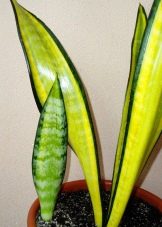


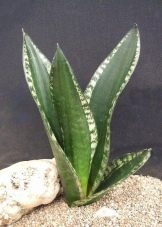
Three-lane or Trifasciata
It is considered the most common, has long thick pointed leaves of a rich green color with oblong dark stripes. They are collected in small sockets. It blooms in small, panicle-shaped inflorescences with a pleasant aroma. This variety has many varieties.
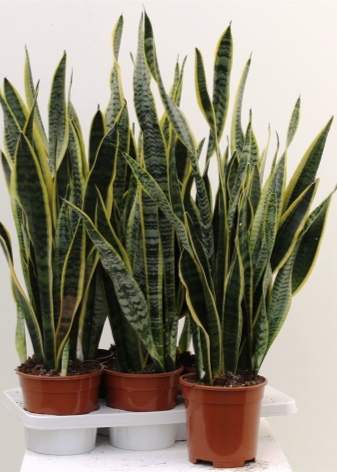
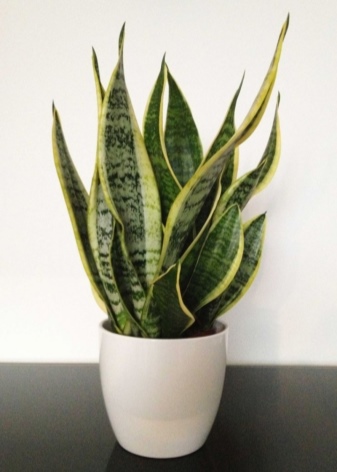
Laurenti
A plant with grayish-green leaves, edged with a bright border, reaching a height of more than a meter. It is the basis of several varieties.

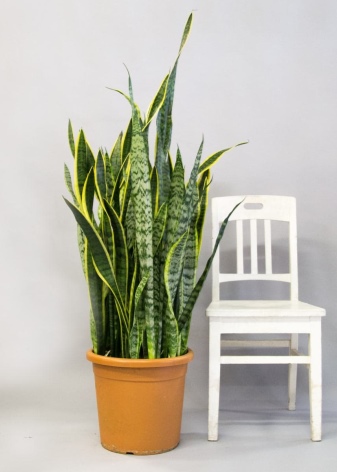
Nelson
It is a hybrid of the Laurenti variety. The leaves are velvety, dark green with a slight sheen, collected in dense rosettes. The leaf plates are not very long, growing vertically.
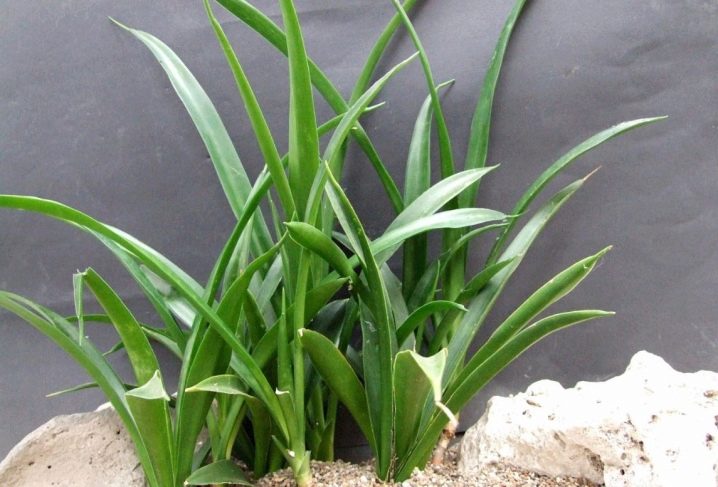
Compact
Also a hybrid "Laurenti", but unlike it has not so long leaves. They also beautifully curve outward, creating a voluminous rosette. It grows slowly, varietal characteristics are preserved only when propagated by the rhizome. Does not tolerate excessive watering, leaves wither and dry out.
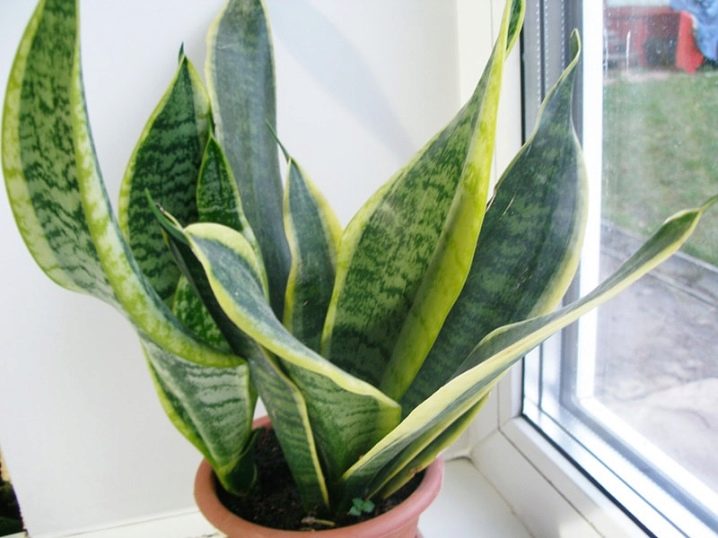
Hanni
This variety is represented by a large number of hybrids that have common properties:
- small, undersized, vase-like rosettes;
- low voluminous leaves with pointed tips that deviate slightly outward;
- do not belong to flowering varieties.
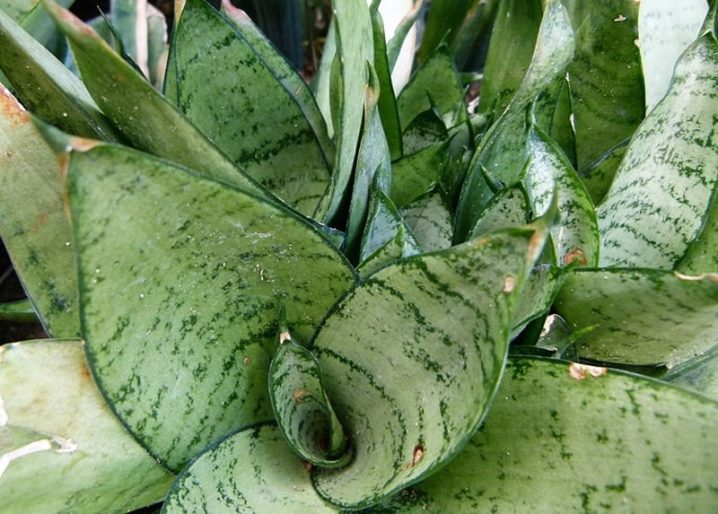
Quite a lot of hybrids of this variety are cultivated, among them there are both monochromatic and variegated. The most popular varieties of the "Hanni" variety are:
- Golden - has wide yellow stripes along the edges;
- "Silver" - leaves are silvery with indistinct dark stripes;
- "Kristata" - with spotted leaf plates of green color, which seem to be bent in half lengthwise.
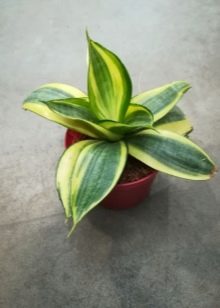
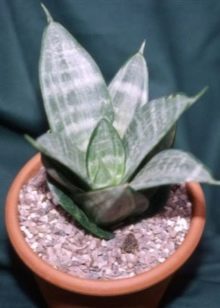
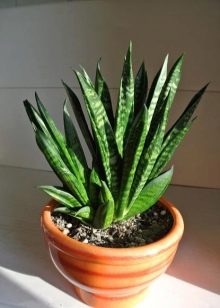
The exotic hybrids of the Hanni variety, which are mainly in private collections of sansevieria lovers, include:
- "Cream" - with green leaves with a silvery sheen and a light border;
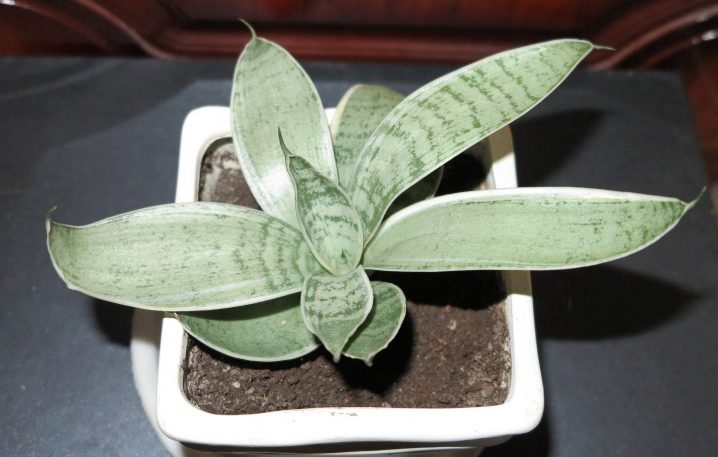
- "Marginata" - green leaves of plants of this variety have a yellow border around the edge;

- "Favorite" - differs in that the yellow-green leaf plates have membranes;
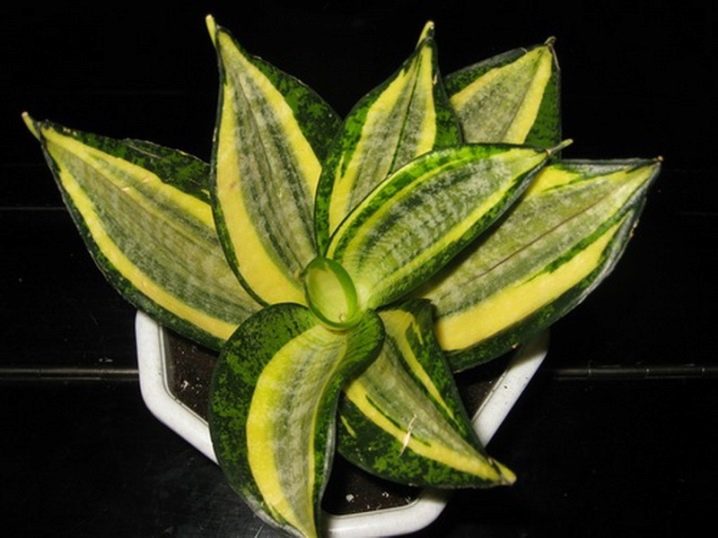
- "Straaker" - dark green sheets of small size in the middle are colored yellow and slightly turned to the sides;
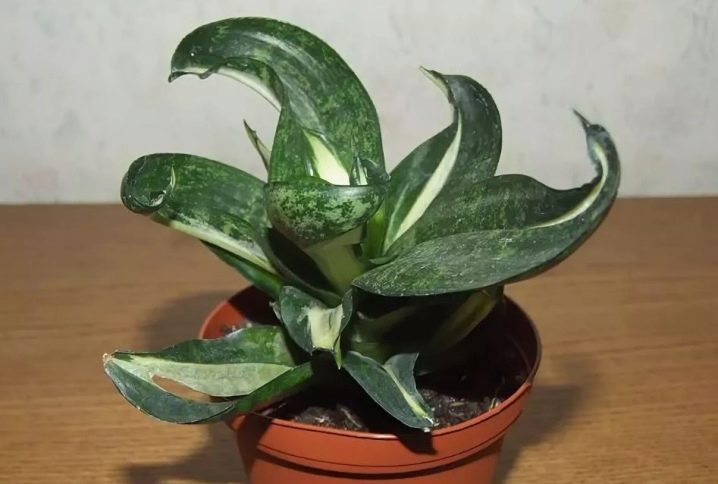
- "Jade" - has a solid dark green color.
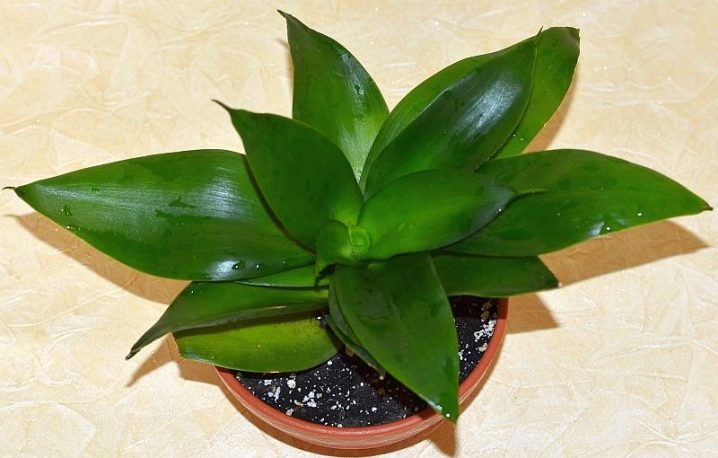
Moonshine
It is characterized by attractive long silvery-green and white leaves that reach 60 cm.

Gold Flame
It has beautiful elongated yellow-green leaves, the upper side of which is bright yellow (visually reminiscent of flames), and the lower side is green with a golden border. The younger the plant, the more yellow it has.

Robusta
This variety forms dense rosettes of small wide green leaves with dark stripes. It has several varieties:
- "Black" - characterized by rapid growth, while the color of the leaves changes with age - from bright green to almost black with a metallic sheen;
- "Blue" - has dense spear-shaped leaves that grow horizontally in tiers and have a bluish tint with a slight waxy bloom;
- "Black Coral" - with silvery patterns on the surface of the leaves.
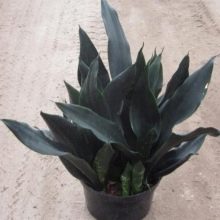
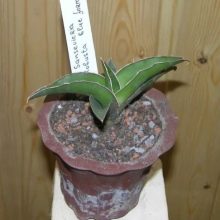
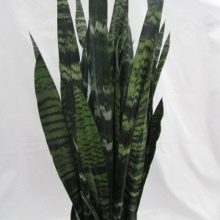
Futura
A newly emerged variety characterized by dense rosettes of about 10 light green leaves with dark stripes and yellow edging. This variety has several subspecies:
- "Futura Superba" - with wide, dense leaves bordered with a yellow stripe;
- "Futura Gold"- the leaves are somewhat smaller than that of the previous species, and have a more golden hue;
- "Black Gold" - with long narrow leaves that give off a blue tint.

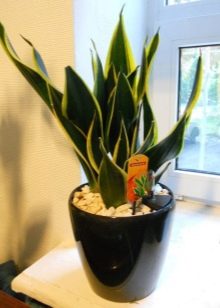
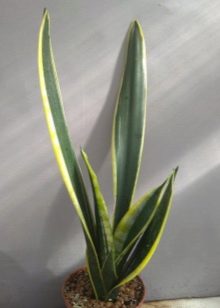
Sensation Bentle
It stands out among other varieties with white stripes located along the entire length of the leaf plate and alternating with dark emerald dots. This color gives the plant an unusually elegant look. The leaves are dense, bright green in color, forming round rosettes up to 60 cm high. Cleans the air well, does not like bright sunlight.
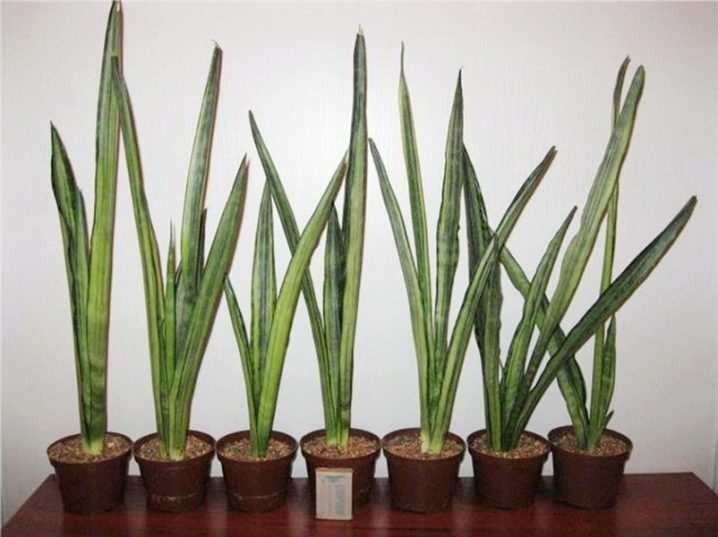
Silver Queen
This species got its name due to its unusual color. It is a hybrid variety with silvery leaves covered with dark green spots, edged with an emerald stripe. As they grow older, the leaf plates darken.
To preserve the characteristic properties of the variety, it is worth propagating this plant with parts of the rhizome.
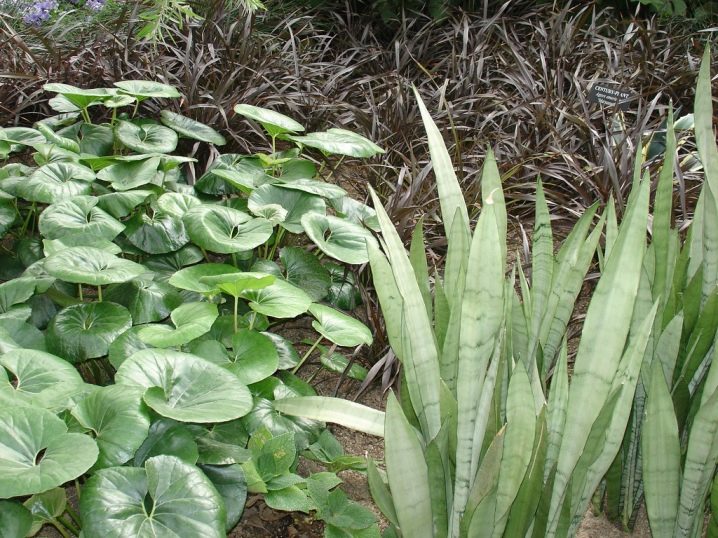
Twister Sister
One of the recently bred varieties. Named because of its peculiarity to grow on two shoots. The leaves are olive-colored, with dark small dots and a yellow edging, collected in low rosettes. The tips of the plates are curled.
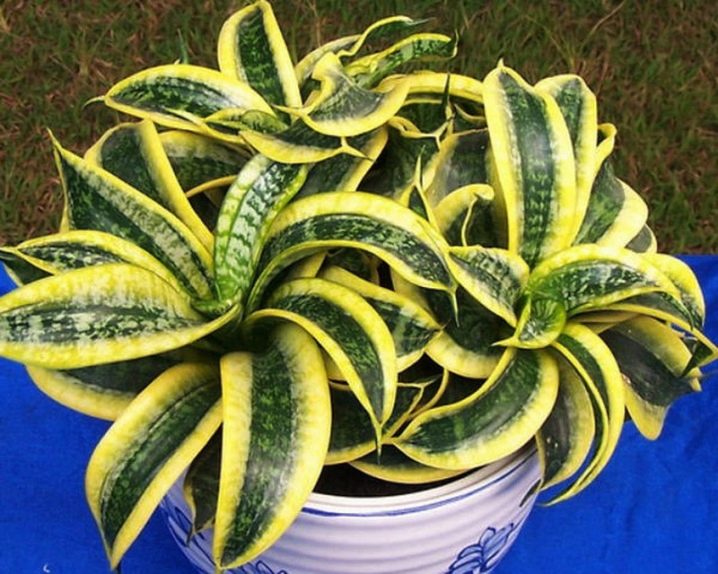
Sansevieria cylindrical
This species is distinguished by original twisted leaves that visually resemble long cylinders. It is very popular among florists. The leaves are elastic, easily intertwined, creating interesting compositions. Quite a few varieties belong to it:
- "Twister" - with tall dark green bending leaves that lend themselves to weaving;
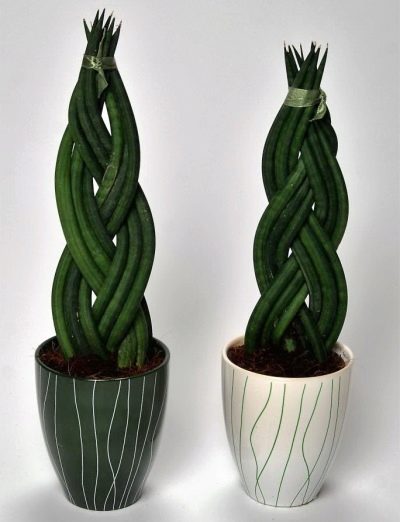
- "Mikado" - still not widespread variety with thick green leaves with dark stripes across;
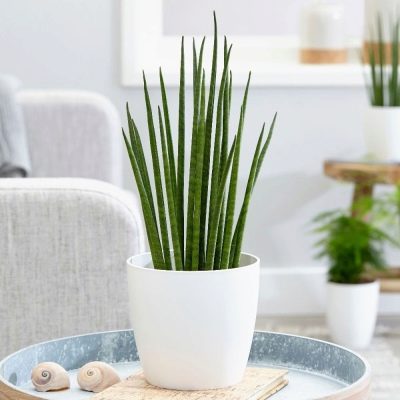
- "Spike" - characterized by the growth of pointed leaves, which alternate from the base of the trunk;
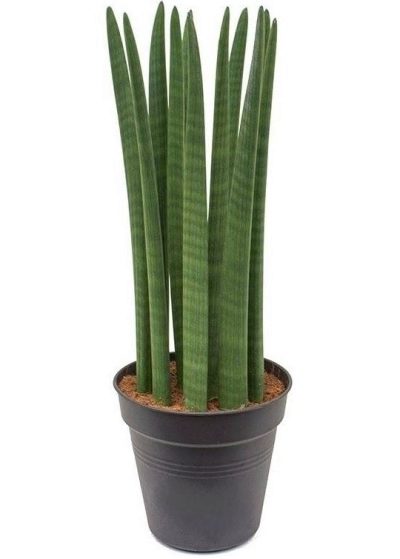
- "Patens" - leaves grow fan-shaped and parallel to the ground, have stripes along their entire length;
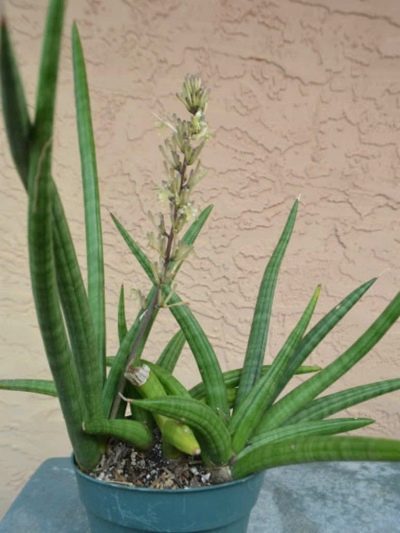
- "Spaghetti" - grows in rosettes, leaves up to half a meter and pointed upwards;
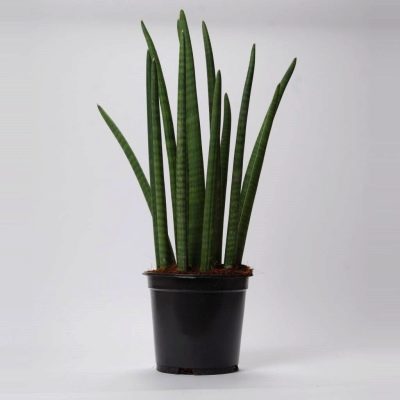
- "Velvet Touch" - a new variety, developed on the basis of the previous one and has a bright border on the upper part of the leaves.
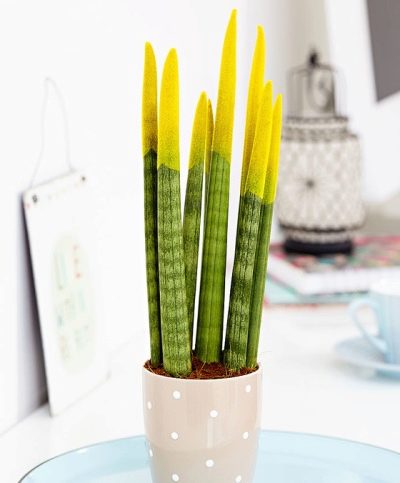
Bonselensis
Volumetric sheet plates in the form of a cylinder form a two-row rosette. Differs in a fan-shaped arrangement of leaves. In terms of color, this variety is similar to the "cylindrical sansevieria".

Zeylanika
One of the most popular varieties among florists. The young plant is distinguished by small thin leaves, which, as they mature, grow and acquire silvery spots and small waves. The patterns are mainly distributed in the center of the plate. With good care, it can reach a height of up to 1.5 meters. Particularly unpretentious, but loves sunlight.
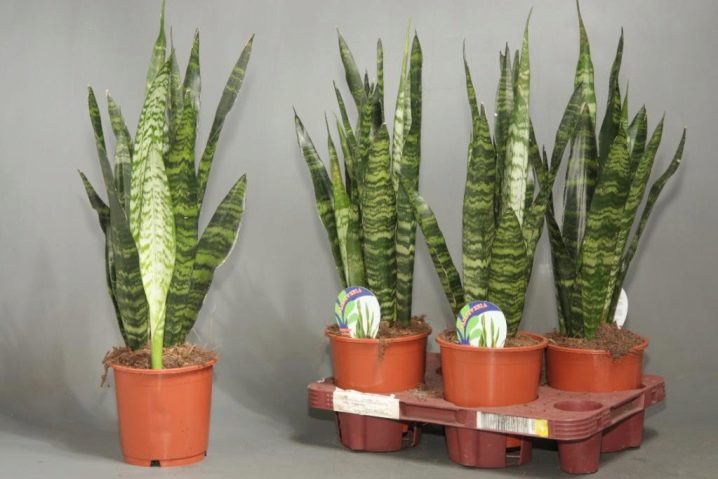
Pickaxes
It grows in rosettes of several pieces, leaves are green or pinkish-brown, covered with small light dots. This type includes varieties:
- "Kirki the Beautiful" - with brown leaves with a red tint;
- Kirki Friends - characterized by small rosettes of long narrow leaves;
- "Kirk Silver Blue" - a miniature variety with dense wavy leaves of a silvery-blue tone and small spots.

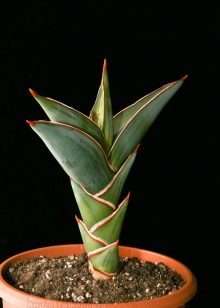
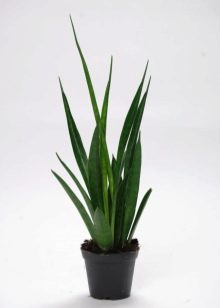
Sansevieria large or Grandis
The leaves of an adult plant are wide and rather long (up to 1.5 m). Due to its solid size, it received the unofficial name "Elephant ears". The green leaves are covered across with dark zigzag patterns, and along the edges with a reddish border. The plant blooms with pale green buds that form beautiful clusters.
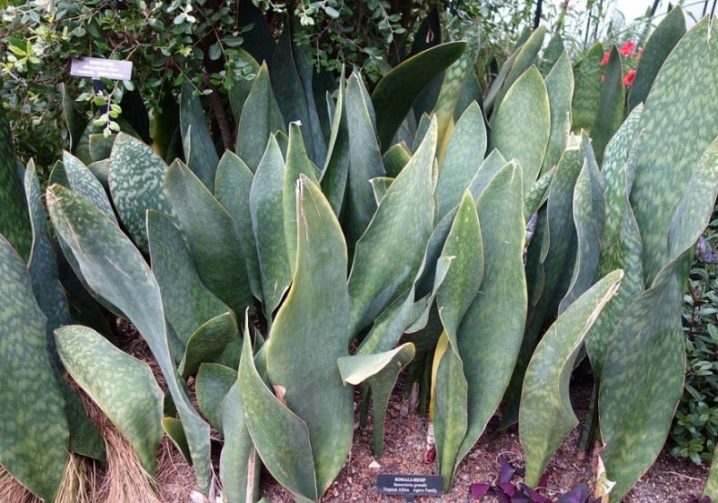
Liberica
Differs in a special arrangement of leaves: they grow almost horizontally. Forms rosettes of 5-6 sheet plates of unusual color. The base of the leaf is dark green, covered with much lighter stripes or dots, and the edges are bordered with a pink or terracotta stripe. With good care, the plant blooms, inflorescences of a light tone with a strong aroma.
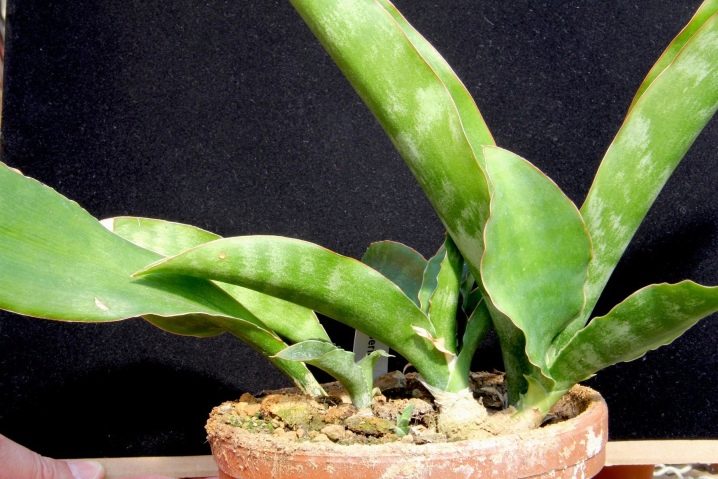
Sansevieria Craig
Plants of this variety are distinguished by elongated, peaked leaf plates of a pale yellow color with episodic stripes of green color.
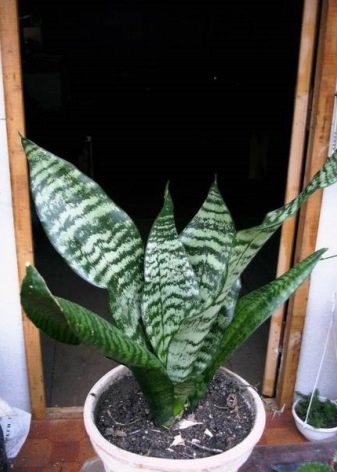
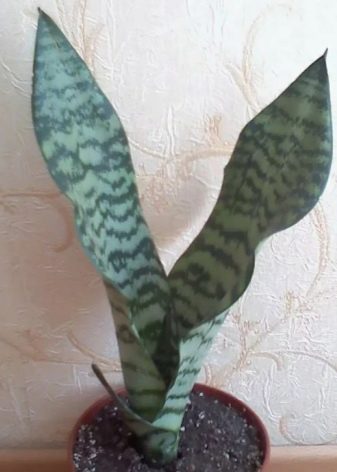
Eilenzis
This variety has dense, curved leaves in the shape of a long cylinder. Color - light blue with repeating light stripes across and green along. Young plants on each leaf have a longitudinal deepened canal. As they grow, the leaf plates twist into the canal, and the ends form a tube.

Graceful
It differs in that the leaves of the plant depart from a relatively small round-shaped shoot. They are quite fleshy and wide, the pointed upper part is rolled up in a tube. The color is green with a gray tint along the entire width of the plate - thick dark green stripes. From the base of the trunk, shoots are formed, which give the plant even more grace. When flowering, forms dull small flowers with a very faint odor.
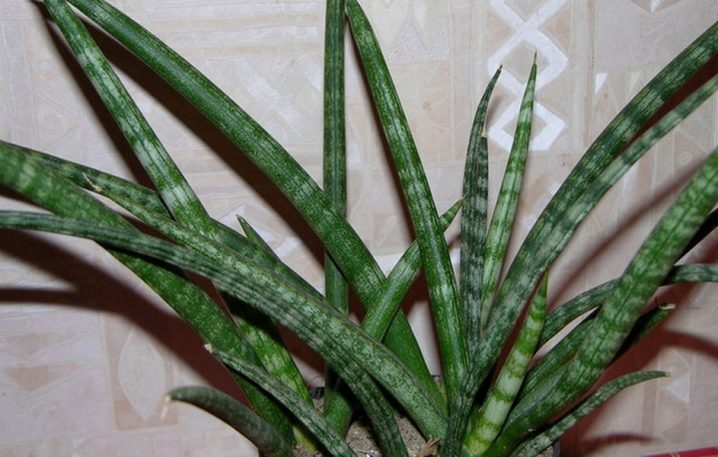
Walking or Pinguecula
The formation of a trunk and the placement of leaf plates of a peculiar shape, which is unusual for most plants of this species, gave the name to this variety. Large pointed leaves have an elongated shape and a narrow edging. Rosettes are formed on shoots that extend from the main trunk. The plant seems to be making steps.

Bali
Also belongs to the stem type, like the previous variety. Outwardly, they are very similar, but there are several differences:
- shoots are somewhat thicker (up to 5 cm);
- leaf plates are shorter and more rounded, dark green with stripes of a silvery-green hue.

Francis
One of the few stem species with a creeping shoot. It forms cylindrical leaves of a dark green color with a somewhat rough texture. They are quite long (can grow up to 60 cm), with a pointed top. Looks beautiful in hanging pots.
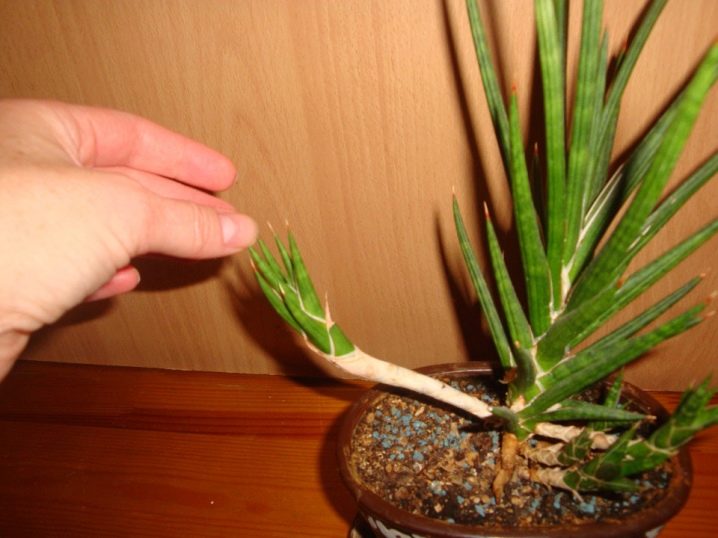
Ehrenberg
This variety does not differ in height, it reaches half a meter. Sword-shaped leaf plates grow in pairs, horizontally to the ground. In nature, it can grow above a meter. In a home environment, it looks less impressive, but still very beautiful.
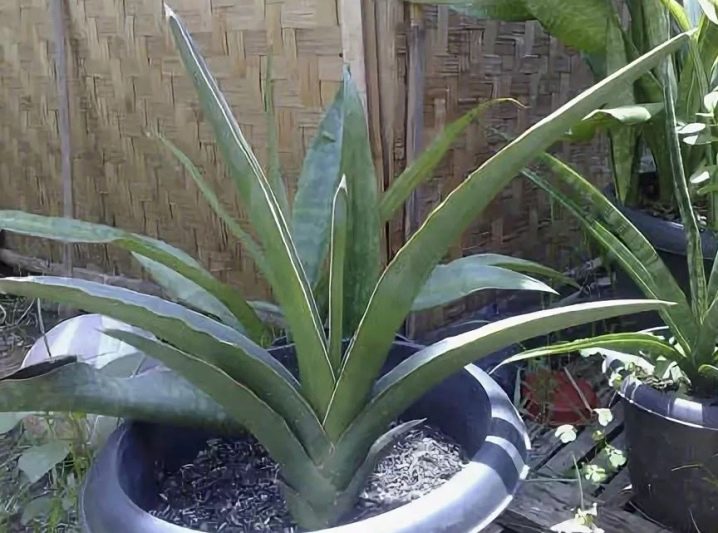
Stacks
The description is similar to "Ehrenberg", but has several differences: the fleshy leaf plates are folded along and have a dark green color with a marble overflow. During flowering, forms yellow-white small flowers with a pleasant scent.
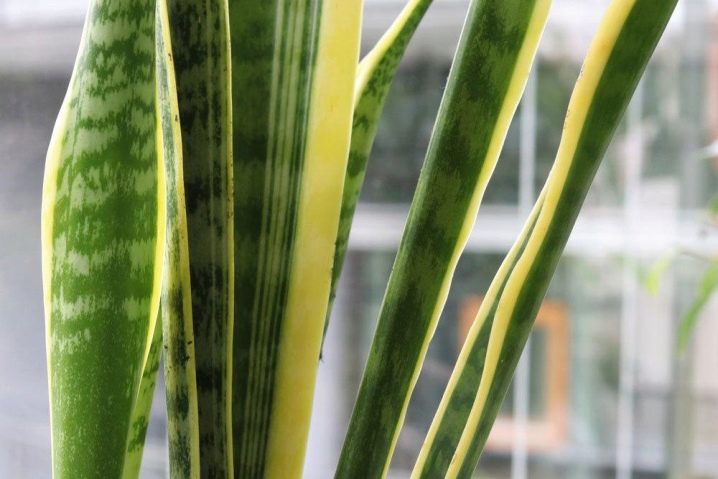
Popular flowering varieties
In nature, "mother-in-law's tongue" blooms regularly. The flowering period is short-lived and has its own nuances:
- flowers bloom only at night;
- the buds have a bright aroma;
- the peduncle is formed in the outlet only once, after which it dies off over time.

The flowers of most of the species are inconspicuous, but there are varieties that bloom unusually beautifully.
Hyacinth
It has a powerful rhizome and small rosettes consisting of 2-4 dark green leaves. The leaf plate is V-shaped with a length of up to half a meter, it expands in the center, and narrows at the base. The edging along the edges can be modified from red-orange to milky white.Flowering occurs in winter, a rather long peduncle is formed, which is completed by a panicle of small fragrant inflorescences. In appearance and fragrance, no hyacinth flower is similar.

One of the most spectacular hybrids of this species is called the Ayo variety. The plants have rounded and long, growing up to half a meter leaves with blurred silvery dots, and at the edges bordered by an orange stripe.
How to choose?
Sansevieria is not only a beautiful and spectacular plant, it absorbs harmful substances, thereby purifying the air. Due to its unpretentious care, endurance and rapid growth, it is considered very popular among flower growers. When choosing a plant, pay attention to the fact that the rhizome and leaf plates are undamaged, not drooping or dry.
In a healthy plant, the leaves are dense, elastic, with a slight sheen. Well, then it's a matter of taste. Some people like flowers with a long leaf, others like neat squat rosettes, stem types are ideal for hanging pots. Whatever choice you make, you will not have to regret it, because sansevieria will not leave anyone indifferent.
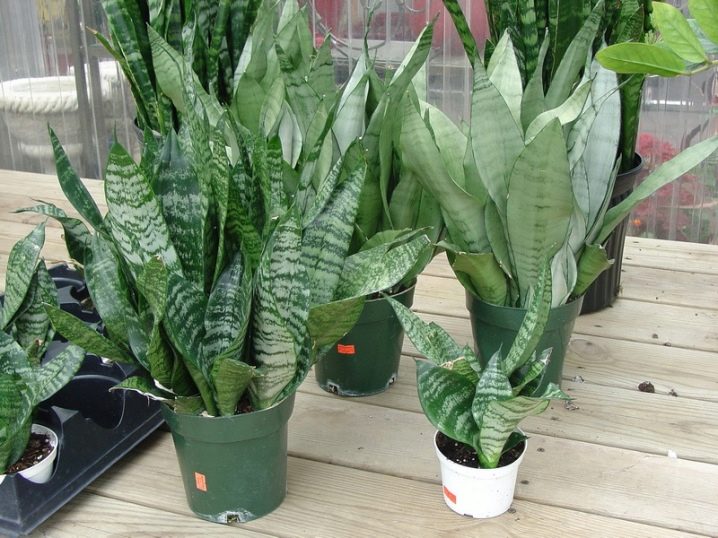
General rules for home care
The “pike tail” does not require any special attention, the flower is rather unassuming and needs minimal maintenance. It is worth paying attention to the choice of a flowerpot, it must be thick-walled and durable. Otherwise, the powerful roots of the plant can damage it. Sansevieria has no clear requirements for light; it can grow both in partial shade and in the sun.
The only thing that is worth protecting it from direct sunlight on the sheet plates.
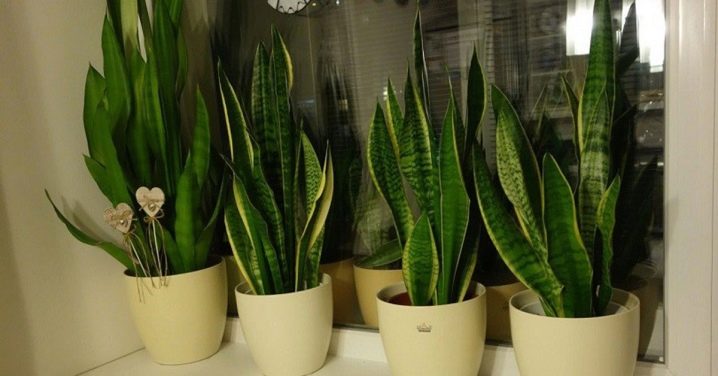
A suitable air temperature for a plant is from 18 to 25 degrees, although it feels quite comfortable at 12 degrees in winter. May die at lower temperatures. "Mother-in-law's tongue" belongs to succulents, that is, it is capable of absorbing moisture, therefore it does not require frequent watering. It is enough to moisten the plant once a week in summer and once a month in winter. It is necessary to avoid getting water on the outlet and stagnant water in the pan, otherwise the flower may begin to rot. Better to water around the edges of the pot. Leaves should be wiped with a damp sponge, not sprayed.
To maintain good condition in the summer, it is worth feeding it with mineral fertilizers once a month.
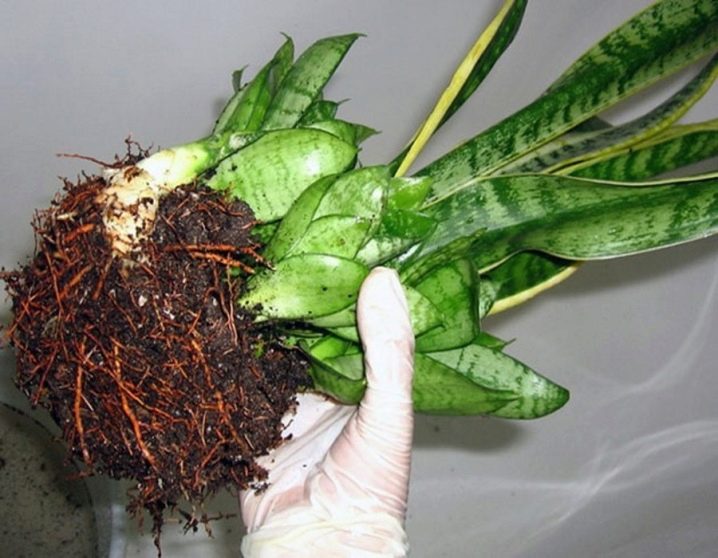
Among the huge variety of sansevieria species, everyone can choose a flower for themselves and admire this spectacular plant. For information on how to care for sansevieria at home, see the next video.


























Thanks. I did not even think that there are so many types of sansevieria. I have one - Honey Gold. A beautiful and grateful plant with minimal maintenance. It tolerates a month and a half without watering. I was convinced personally - I was on a business trip.
Twister Sister is just a beauty.
A very informative article. So many varieties, beauty! Thanks.
I have two sansevierias. One three-lane, wanted her very much. Grew up quickly, now it is already growing in a bucket pot. The second, with leaves more than a meter long, used to release three flower arrows, which, when blooming in the evenings, smelled deliciously. But after transferring to another place, unfortunately, it stopped blooming.
I have many varieties. Obsessed with them. I recently bought the most epic copy. There is one shovel-leaf, 20 cm high, 10 cm wide, with a red border. The beauty is incredible.
The comment was sent successfully.